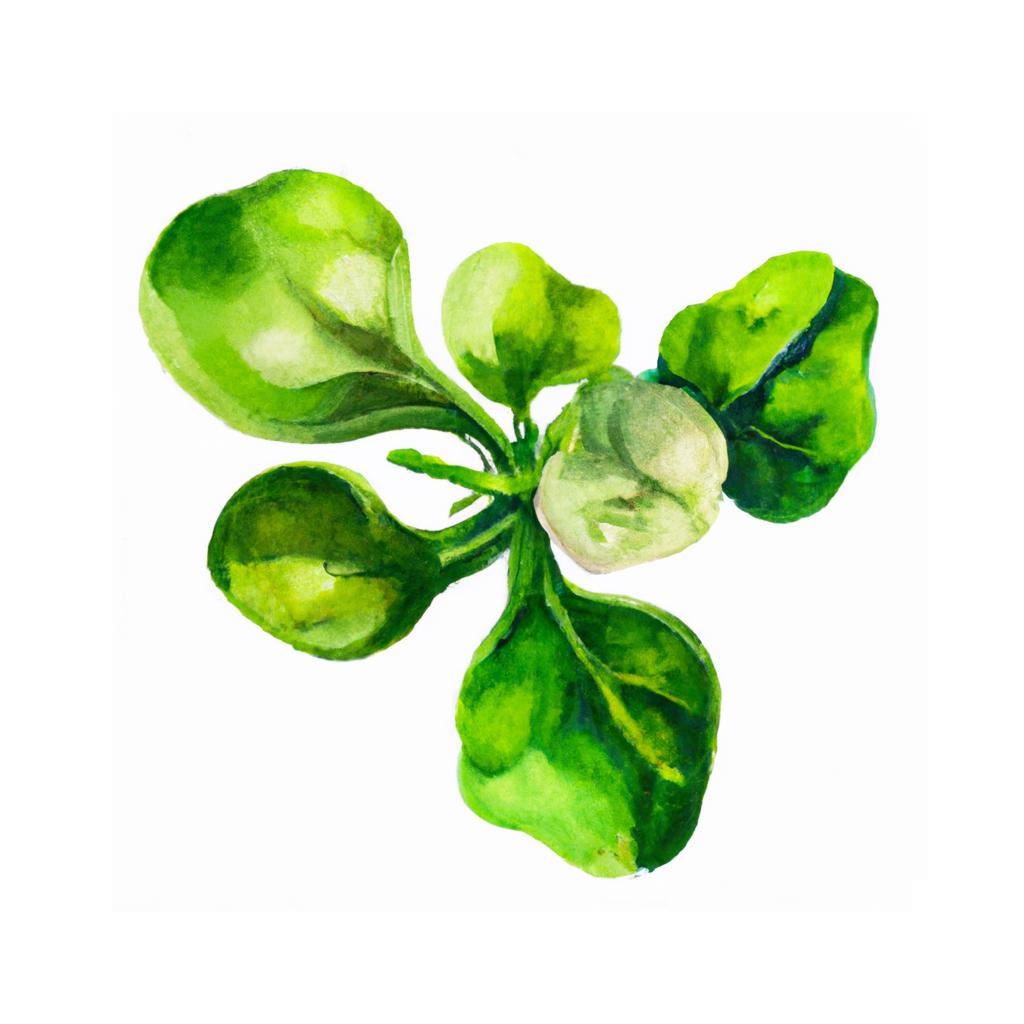
Watercress (Nasturtium officinale) is a perennial, aquatic plant that belongs to the Brassicaceae family. It is native to Europe and Asia but has been naturalized in various parts of the world. Watercress is an excellent source of vitamins, minerals, and antioxidants, including vitamin C, vitamin K, and calcium. It has long been valued for its nutritional benefits and medicinal properties, such as promoting digestion and treating respiratory illnesses.
Watercress has a rich history dating back to ancient times. The Greeks and Romans were known to consume watercress abundantly, and it was a staple food of their civilization. Greek physician Hippocrates, often referred to as the Father of Medicine, is said to have located his first hospital near a stream so he could have access to fresh watercress to use for medicinal purposes. In the Victorian era, watercress was a popular ingredient in sandwiches and salads consumed by the general population.
Watercress has a peppery, slightly bitter taste that adds a distinctive flavor to a variety of dishes. It pairs well with mild ingredients like goat cheese, eggs, and avocados, and enhances the taste of salads, soups, and sandwiches. Watercress can also be added to pesto, used as a garnish, or lightly sautéed to serve as a side dish. Due to its delicate nature, it is best to add watercress to hot dishes just before serving to maintain its vibrant color and texture.
To grow watercress at home, you can start by planting seeds in a container filled with moist, well-draining soil or directly into the ground near a water source. Ensure that the plants receive plenty of sunlight and keep the soil consistently moist. You can harvest watercress once it reaches about 4 inches tall, carefully cutting the stems above the soil level. Regular harvesting will promote bushier growth and prevent the plant from becoming too leggy. Enjoy this nutritious vegetable in your meals for a boost of flavor and health benefits.
This is advice is most applicable to growers in the UK, you may need to adjust the timings if you live somewhere with a different climate and/or seasons.
| Month | Tasks | Advice |
|---|---|---|
| January | - | - |
| February | Sow seeds indoors, | Start sowing watercress seeds indoors in pots containing a mix of soil and compost. Keep the soil consistently moist. |
| March | Sow seeds indoors, Plant out seedlings, | Continue sowing seeds indoors and start planting out seedlings in their final growing position. Make sure the soil remains moist. |
| April | Plant out seedlings, | Plant out any remaining seedlings in their final growing position. Keep the soil consistently moist. |
| May | Harvest leaves, | Start harvesting watercress leaves as needed, ensuring you leave enough for regrowth. |
| June | Harvest leaves, | Continue harvesting watercress leaves regularly. Keep the soil consistently moist for optimal growth. |
| July | Harvest leaves, | Harvest watercress leaves regularly to encourage new growth. Maintain consistent soil moisture. |
| August | Harvest leaves, | Keep harvesting watercress leaves as needed. Ensure the soil remains moist for optimal growth. |
| September | Harvest leaves, | Continue harvesting watercress leaves regularly, and maintain consistent soil moisture levels. |
| October | Harvest leaves, | Harvest any remaining watercress leaves before colder weather sets in. Keep the soil consistently moist. |
| November | - | - |
| December | - | - |